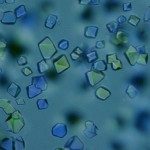Link to Pubmed [PMID] – 30008469
Nat. Rev. Microbiol. 2018 Jul;
Two-component systems reprogramme diverse aspects of microbial physiology in response to environmental cues. Canonical systems are composed of a transmembrane sensor histidine kinase and its cognate response regulator. They catalyse three reactions: autophosphorylation of the histidine kinase, transfer of the phosphoryl group to the regulator and dephosphorylation of the phosphoregulator. Elucidating signal transduction between sensor and output domains is highly challenging given the size, flexibility and dynamics of histidine kinases. However, recent structural work has provided snapshots of the catalytic mechanisms of the three enzymatic reactions and described the conformation and dynamics of the enzymatic moiety in the kinase-competent and phosphatase-competent states. Insight into signalling mechanisms across the membrane is also starting to emerge from new crystal structures encompassing both sensor and transducer domains of sensor histidine kinases. In this Progress article, we highlight such important advances towards understanding at the molecular level the signal transduction mechanisms mediated by these fascinating molecular machines.
